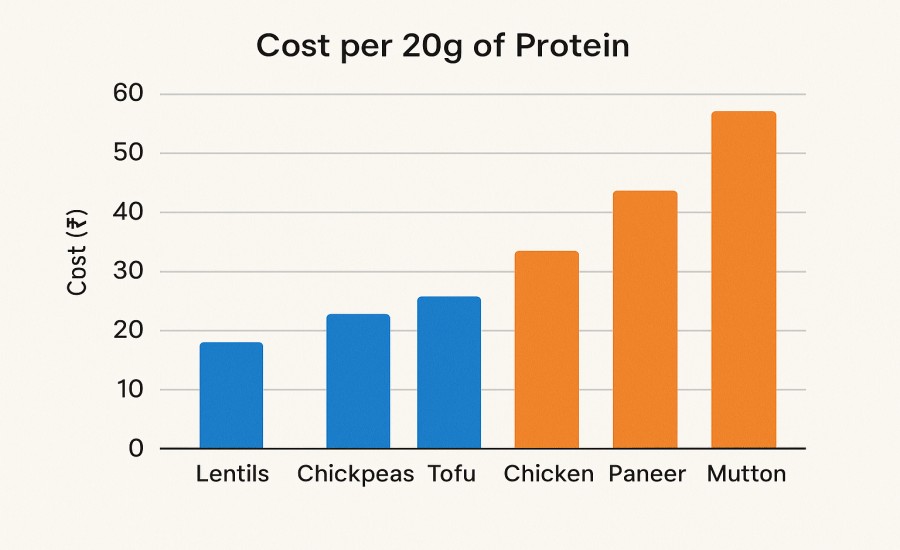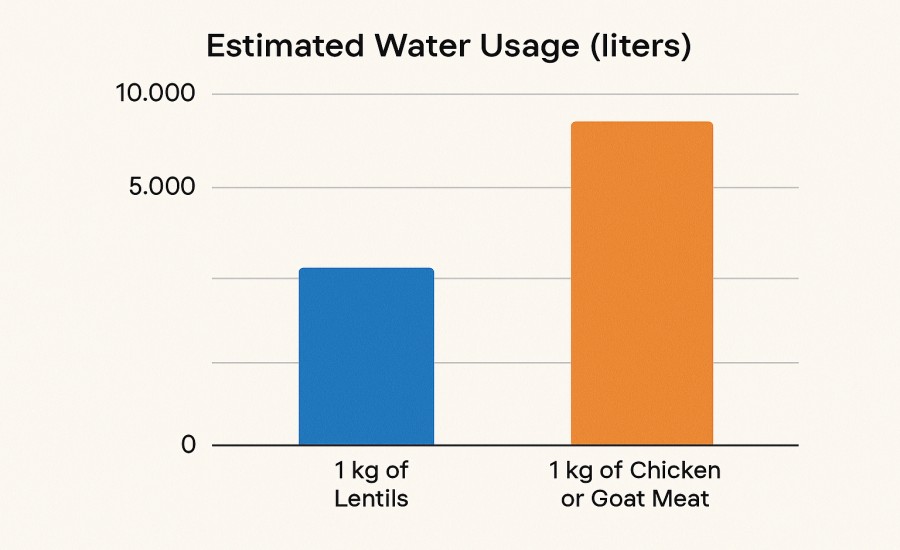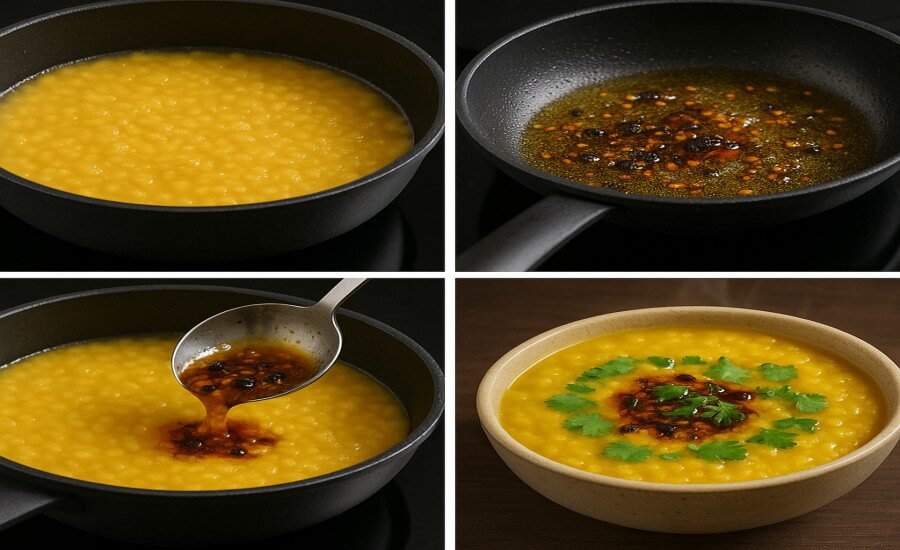A common hesitation when considering a vegan lifestyle is the perceived cost. Marketing often highlights expensive specialty products, leading many to believe plant-based eating is a luxury. However, the reality is quite different. Vegan cooking on a budget is not only feasible but often significantly more economical than diets centered around meat and dairy. By focusing on affordable, wholesome staples, particularly those abundant here in India, anyone can enjoy delicious, nourishing, and compassionate meals without breaking the bank. This guide explores strategies for affordable vegan eating through the lenses of nutrition, ethics, environmental sustainability, and practical kitchen wisdom, empowering you to thrive plant-powered, even on a tight budget.
Vegan Cooking on a Budget: Nourishing, Ethical and Sustainable Eating
LENS 1: Nutritional Analysis (Affordable Nourishment)

Eating affordably doesn’t mean compromising on nutrition. In fact, many of the most budget-friendly vegan staples are nutritional powerhouses.
- Legume Lifeline: Lentils (dal – masoor, toor, moong, urad), chickpeas (chana), kidney beans (rajma), and other beans are incredibly inexpensive sources of protein, fiber, iron, zinc, and complex carbohydrates. They form the backbone of affordable, nutritious vegan eating globally, and especially in India. Gram for gram of protein, legumes are vastly cheaper than meat or dairy.
- Grain Goodness: Whole grains like rice (brown or white), whole wheat flour (atta) for roti/chapati, and local millets like bajra or jowar (common and affordable in Rajasthan) provide essential energy, fiber, and some protein.
- Seasonal & Staple Produce Power: Focusing on seasonal vegetables and fruits, bought from local markets (mandis), is key to affordability. Staples like potatoes (aloo), onions (pyaz), and tomatoes (tamatar) form the base of many budget-friendly Indian dishes (sabzis, curries). Leafy greens like spinach (palak) or fenugreek (methi) are often inexpensive when in season.
- Meeting Nutrient Needs Economically:
- Protein: Easily met with generous servings of dal, beans, chana.
- Iron: Abundant in lentils, beans, spinach; enhance absorption by pairing with Vitamin C-rich foods (lemon juice, tomatoes, amla).
- Calcium: Found in leafy greens, sesame seeds (til), fortified foods (check labels if accessible), and some pulses.
- Zinc: Present in legumes, seeds (pumpkin/sunflower are often affordable), nuts (peanuts are budget-friendly).
- B12: This is the one non-negotiable supplement. While an added cost, B12 supplements are generally inexpensive when bought in larger quantities and crucial for health. Fortified foods are another option if accessible and affordable.
- Healthy Fats on a Budget: Use common cooking oils moderately. Peanuts, sesame seeds, and sunflower seeds offer affordable sources of healthy fats compared to more expensive nuts or imported oils. What inexpensive legume is a staple in your kitchen, and how can you use it more often?
Nutritional Deep Dive: Protein Powerhouses on a Budget
Legumes are champions of affordable nutrition. A simple bowl of dal (lentil soup) served with rice or roti provides a complete protein (when combined, offering all essential amino acids), significant fiber, iron, folate, and complex carbohydrates for sustained energy – all at a very low cost compared to a similar portion of meat or paneer. Regularly including a variety of dals, chana, and rajma is a cornerstone of healthy, budget vegan eating in India.
Voice of Experience (Public Health Nutritionist, India): “From a public health perspective, diets rich in pulses (dals, beans, chana), whole grains, and seasonal vegetables are both incredibly nutritious and culturally appropriate in India. These are naturally low-cost staples. Promoting such plant-based patterns is key to tackling malnutrition affordably and sustainably, far more so than promoting expensive animal products.” – Dr. Sunita Rao, MPH

LENS 2: Ethical Framework (Accessible Compassion & Reducing Waste)

Cooking vegan on a budget aligns financial prudence with core ethical principles of compassion and resourcefulness.
- Compassion for All Incomes: Ethical veganism shouldn’t be a privilege. Demonstrating and sharing ways to eat compassionately on a budget makes the lifestyle accessible to more people, challenging the notion that ethics are expensive.
- The Ethics of Food Waste: Wasting food is ethically questionable when resources are scarce and people go hungry. Budget cooking inherently encourages minimizing waste – using leftovers creatively (e.g., leftover dal in parathas), utilizing vegetable peels and scraps (for broth or composting), buying only what you need, and preserving seasonal abundance (pickling/drying).
- Food Justice & Systemic Issues: An ethical lens considers why processed, often less healthy foods (sometimes including cheap factory-farmed animal products) can be readily available and cheap, while access to fresh, affordable produce might be challenging in certain areas (“food deserts”). Budget vegan cooking can be an act of reclaiming healthy eating, while advocating for systemic change that ensures everyone has access to affordable, nourishing food.
- Supporting Local: Buying directly from local farmers at mandis, when possible, supports the local economy and often provides fresher, cheaper produce, fostering a direct, ethical connection to the food source. How does minimizing food waste align with your ethical values beyond just saving money?
Hidden Benefits: Resourcefulness & Appreciation
Learning to cook delicious, satisfying meals with simple, inexpensive ingredients fosters creativity, resourcefulness, and a deeper appreciation for food and the effort involved in producing it. This contrasts with the often passive consumption encouraged by convenience culture.
Voice of Experience (Food Activist): “Making veganism accessible is an ethical imperative. By focusing on affordable staples like dal, rice, and seasonal sabzi, we show that compassionate eating isn’t elitist. Furthermore, tackling food waste – a huge ethical issue – goes hand-in-hand with budget cooking. Use every part, eat your leftovers, cook simply.” – Kavita Mishra, Community Kitchen Organizer
Critical Reassessment: Acknowledging Realities
While budget veganism is highly achievable, it’s important to acknowledge barriers. Access to fresh markets isn’t universal, time for cooking from scratch can be limited for some, and the initial cost of stocking pantry staples or buying B12 supplements, while small long-term, can be a hurdle. Solutions require both individual strategies and systemic support.
LENS 3: Ingredient Science & Environment (Sustainable Savings)

The most budget-friendly vegan staples are often also the most environmentally sustainable choices.
- The Science of Staples: Understanding basics like soaking dried beans (rehydrates cells, reduces cooking time, improves digestibility) or how lentils thicken soups allows efficient use of these low-cost powerhouses. Learning to make simple flatbreads (roti, chapati) from atta leverages basic gluten development.
- Low-Impact Proteins: Legumes (dals, beans, chana) have a remarkably low environmental footprint. They fix nitrogen in the soil, reducing the need for synthetic fertilizers, and require far less water and land than raising livestock for protein.
- Seasonal & Local Advantage: Eating vegetables and fruits in season, sourced locally (like winter carrots, peas, cauliflower or summer gourds, melons in Rajasthan), minimizes transportation emissions, reduces the need for energy-intensive storage, supports local biodiversity, and is almost always cheaper.
- Water Wisdom: Producing plant-based staples like rice and legumes requires water, but generally far less per calorie or gram of protein than producing meat or dairy. Choosing drought-resistant grains like bajra or jowar, well-suited to Rajasthan’s climate, further enhances water sustainability.
- Comparing Budget Options: Even inexpensive animal products often come from intensive factory farming systems with significant environmental costs (pollution, greenhouse gas emissions, antibiotic use). Budget vegan staples offer a cleaner alternative. How does focusing on seasonal vegetables available locally impact both your budget and your environmental footprint?
Market Transformation Map Suggestion: A graph comparing the average retail price trend of essential dals (like Toor or Moong) versus chicken or mutton prices in India over the past 5-10 years, likely showing greater stability for dals.
Voice of Experience (Environmental Food Researcher): “The data is clear: diets centered on legumes, whole grains, and seasonal vegetables are drastically less resource-intensive than meat-heavy diets. From a sustainability perspective, promoting affordable, plant-based staples is one of the most impactful shifts we can make in our food system, especially in populous regions like India.” – Dr. Alok Sharma, Sustainable Agriculture Institute

LENS 4: Everyday Practitioner’s Experience (Tips, Tricks & Recipes)

This is the heart of vegan cooking on a budget – practical strategies and delicious, affordable recipes.
Money-Saving Strategies:
- Plan Your Meals: Decide what you’ll eat for the week before shopping. Prevents impulse buys and food waste. Base plans around sales and seasonal produce.
- Shop Smart:
- Buy Dried Staples: Dried beans, lentils, rice, and whole grains in bulk are significantly cheaper than canned or smaller packages.
- Local Markets (Mandis): Often offer the freshest seasonal produce at the best prices compared to supermarkets. Bargaining may be possible.
- Compare Prices: Check prices between different shops or vendors.
- Buy Whole Vegetables: Pre-cut vegetables cost more.
- Seasonal Focus: Build meals around vegetables and fruits that are currently in season and abundant (therefore cheaper). Right now (May, hot season), gourds, cucumbers, melons might be cheaper than out-of-season cauliflower.
- Cook from Scratch: Making your own sauces, chutneys, roti/chapati, and snacks is much cheaper than buying pre-made versions.
- Batch Cook & Freeze: Cook large quantities of dal, sabzi, rice, or bean dishes and freeze portions for quick future meals. Saves time and utilizes ingredients efficiently. Pressure cookers are excellent for batch cooking beans/lentils quickly.
- Love Your Leftovers: Plan to use leftovers for lunch the next day or transform them into new dishes (e.g., leftover sabzi as a filling for parathas or sandwiches).
- Simple Preparations: Focus on simple cooking methods like boiling, steaming, stir-frying (sabzi), and making one-pot meals like khichdi or dal-rice.
Budget-Friendly Vegan Recipes (Indian Staples):
- Basic Dal Tadka: Cook rinsed lentils (like toor or masoor dal) with turmeric and salt until soft. Prepare a tempering (tadka) by heating oil, sputtering mustard seeds (rai) & cumin seeds (jeera), adding chopped garlic, dried red chilies, and maybe curry leaves or asafoetida (hing). Pour tadka over cooked dal. Serve with rice or roti. (Extremely cheap, nutritious, staple).
- Aloo Matar Sabzi (Potato & Pea Curry): Sauté onions, ginger, garlic. Add cubed potatoes and peas (fresh or frozen). Add basic spices (turmeric, coriander, chili powder, salt). Add chopped tomatoes or puree. Add a little water, cover and cook until potatoes are tender. Finish with garam masala. (Uses cheap staples).
- Chana Masala (Chickpea Curry): Use soaked and cooked chickpeas (cheaper than canned). Make a base masala with onions, ginger, garlic, tomatoes, and standard Indian spices. Simmer chickpeas in the masala until flavours meld. (Hearty, protein-rich, affordable).
- Vegetable Khichdi: Cook rice and moong dal together with turmeric and salt until soft and mushy. Add simple seasonal vegetables like carrots, peas, or beans while cooking. Serve plain or with a simple tadka. (One-pot, nourishing, very budget-friendly).
- Roti/Chapati: Make simple flatbreads at home using whole wheat atta and water. Much cheaper and fresher than store-bought. Perfect accompaniment to dals and sabzis.
What simple, affordable vegan meal did you enjoy recently?
Daily Impact: Budget Pantry Power
Focus on keeping these affordable staples consistently stocked:
- Various Dals (Toor, Moong, Masoor, Chana Dal)
- Whole Beans/Chickpeas (Rajma, Chana, Black-eyed Peas/Lobia)
- Rice (Basmati or local variety)
- Whole Wheat Atta (for Roti)
- Potatoes, Onions, Garlic, Ginger
- Basic Spices (Turmeric, Cumin, Coriander, Chili Powder, Mustard Seeds, Salt)
- Cooking Oil
- Seasonal Vegetables based on market availability/price.
Voice of Experience (Student Cooking Vegan on a Budget): “As a student, budget is everything! I live on dal, rice, roti, and simple sabzis using whatever vegetables are cheapest at the market. Cooking dried beans in a pressure cooker saves so much money compared to canned. Spices make everything delicious. It’s definitely cheaper than eating meat or ordering out.” – Rohan Meena, University Student, Jaipur

Alternative Approaches: Minimalist Cooking
Explore recipes specifically designed with minimal ingredients (5-ingredient meals) or one-pot preparations to save time, money, and cleanup effort.
PERSPECTIVE INTERSECTION MATRIX
- Nutrition & Budget (Lens 1 & 4): Achieving good nutrition (Lens 1) on a budget relies heavily on prioritizing inexpensive, nutrient-dense staples like legumes and grains, using practical shopping/cooking strategies (Lens 4).
- Ethics & Affordability (Lens 2 & 4): The ethical goals of accessibility and waste reduction (Lens 2) are directly supported by budget cooking techniques like meal planning, using leftovers, and buying staples affordably (Lens 4).
- Environment & Staples (Lens 3 & 4): The most budget-friendly staples (Lens 4 – legumes, grains, seasonal veg) often have the lowest environmental impact (Lens 3).
- Practice & Resourcefulness (Lens 4 & All): Practical budget cooking (Lens 4) necessitates resourcefulness, drawing on nutritional knowledge (Lens 1), ethical motivations (Lens 2), and sustainable ingredient choices (Lens 3).
- Local Context (All Lenses): Affordability (Lens 4), nutrition (Lens 1), ethics (Lens 2), and sustainability (Lens 3) are all deeply influenced by the local availability and cost of ingredients, like seasonal vegetables and staple grains in Rajasthan.
MISCONCEPTION ANALYSIS
| Misconception | Reality |
| Veganism is inherently expensive due to specialty products. | While specialty products exist, a healthy vegan diet built on staples like lentils, beans, rice, oats, potatoes, seasonal vegetables, and fruits is typically far less expensive than diets including meat, fish, cheese, and eggs. |
| Eating vegan on a budget means boring, tasteless food. | Flavor comes from cooking techniques, herbs, and especially spices – which are relatively inexpensive and used extensively in Indian cooking. Budget vegan meals like dal, sabzi, and khichdi can be incredibly flavourful. |
| It’s hard to get enough protein or nutrients on a cheap vegan diet. | Legumes (dal, chana, rajma) are extremely cheap and packed with protein and iron. Whole grains add more protein and fiber. Seasonal vegetables provide vitamins. Nutrient density on a budget is very high with whole plant foods. |
| Cooking from scratch (beans, breads) takes too much time for busy people. | Using tools like pressure cookers drastically cuts bean/lentil cooking time. Making basic roti takes minutes. Batch cooking on weekends provides quick meals throughout the week, saving time long-term. |
| Cheap food is always unhealthy food. | While some cheap processed foods are unhealthy, inexpensive whole plant foods (legumes, grains, vegetables, fruits) form the foundation of some of the healthiest dietary patterns globally. |
KEY TURNING POINTS
- Mainstream Awareness of Legumes’ Value: Increased recognition (globally and reinforced locally in India) of lentils, beans, and chickpeas as cheap, healthy, sustainable protein sources.
- Rise of Budget Vegan Resources: Proliferation of cookbooks (like “Plant-Based on a Budget”), blogs, and social media channels specifically dedicated to affordable vegan eating.
- Food Waste Reduction Movement: Growing awareness of food waste spurred interest in budget-friendly techniques like using scraps and leftovers, which aligns well with vegan cooking.
- Focus on Local & Seasonal Eating: Increased emphasis on the cost savings and environmental benefits of eating produce that is in season and locally grown.
- Economic Factors: Rising prices for meat and dairy products in many regions making plant-based staples comparatively more attractive financially.
SYNTHESIS & RECOMMENDATIONS
Dismiss the myth: Vegan cooking on a budget is not just possible, it’s practical, sustainable, ethically sound, and can be incredibly delicious and nourishing. By centering your meals around universally affordable staples – particularly lentils, beans, grains, and seasonal produce abundant in India – and employing smart shopping and cooking strategies, you can enjoy a fulfilling plant-based lifestyle without financial strain. Reducing food waste and cooking from scratch become rewarding practices that benefit your wallet, your health, the planet, and align with compassionate values. Eating well doesn’t have to cost the earth.
Recommendations for Budget Vegan Cooking:
- Embrace Legumes: Make dals, beans, and chana the protein stars of your meals. Buy dried and cook in bulk (pressure cooker helps!).
- Prioritize Whole Grains & Staples: Rely on rice, whole wheat atta (for roti), local millets (bajra, jowar), potatoes, and onions as filling bases.
- Shop Seasonally & Locally: Visit local markets (mandis) for the best prices on seasonal vegetables and fruits. Plan meals around what’s abundant.
- Plan Your Meals: Create a weekly meal plan based on staples and seasonal produce to guide shopping and prevent waste.
- Cook From Scratch: Make your own basics like roti, simple sauces, and chutneys. Avoid expensive pre-made items.
- Batch Cook & Freeze: Prepare large quantities of freezable dishes like dals, stews, and sabzis for easy future meals.
- Use Leftovers Wisely: Pack leftovers for lunch or creatively incorporate them into new dishes.
- Spice It Up: Invest in a basic set of Indian spices – they provide immense flavour to simple ingredients at low cost per serving.
- Supplement B12: Factor in the small but essential cost of a reliable Vitamin B12 supplement.
FURTHER AREAS OF EXPLORATION
- Detailed Guide to Cooking Different Indian Dals
- Meal Prep Ideas for Budget Vegan Lunches
- Zero-Waste Cooking Tips for the Indian Kitchen
- Seasonal Vegetable Charts for Rajasthan/India
- Making Simple Vegan Curries (Sabzis) with Minimal Ingredients
- Affordable Vegan Snack Ideas
- Comparing the Cost of a Vegan vs. Non-Vegan Grocery Basket in India












